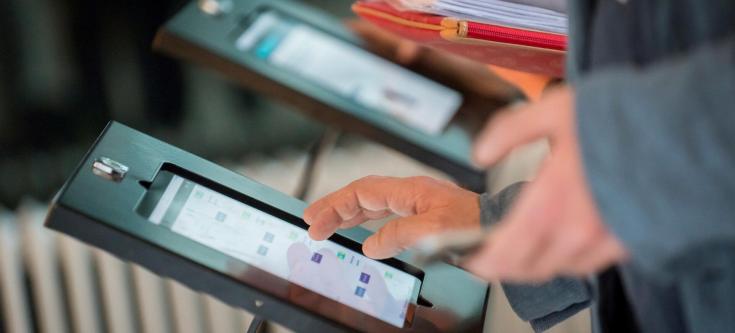Annual report on European SMEs 2020/2021

The recently published Annual Report on European SMEs 2020/2021 from the European Commission is part of the SME performance review, one of the main tools the European Commission uses to monitor and assess countries' progress in implementing the SME strategy. The annual report provides a synopsis of the size, structure and importance of SMEs to the European economy and an overview of their past and forecasted performance. Microenterprises are not included in the analysis. In addition to the Annual Report on European SMEs 2020/2021, the European Commission also provides SME fact sheets at the European and national level.
The new annual report comes out while the EU SME sector is still impacted by the Covid-19 pandemic, which started 2020. The first part of the report reviews the impact of the pandemic on EU SMEs in 2020, and the likely performance of EU SMEs in 2021. The second part of the report focuses on the digitalisation of SMEs.
EU-27 SMEs and the Covid-19 pandemic
The impact of the pandemic on SMEs varied greatly across Member States and industries. Not surprisingly, the accommodation and food service activities were by far the most affected. SMEs in the digital sector were almost able to maintain the level of value added generated compared to 2019 and performed better than the other ones. A similar trend is expected for 2021.
State of SME digitalisation
According to the annual report 2020, the extent of enterprise digitalisation varies not only with the size of the enterprise but also across Member States. An analysis of the state of digitalisation of small and medium-sized* EU-27 SMEs reveals three distinct groups of Member States:
- A first cluster of Member States (BG, EL, HU, IT, LV, PL, RO, SK) in which small and medium-sized SMEs clearly lagged behind their peers in other EU-27 Member States.
- A second cluster of Member States (AT, CY, CZ, DE, EE, ES, FR, HR, LT, LU, PT, SI) in which the digitalisation of small and medium-sized SMEs was broadly similar to the EU-27 average.
- A third group of Member States (BE, DK, FI, IE, MT, NL, SE) in which small and medium-sized SMEs outperformed their peers in the other two groups.
Key challenges for SMEs on a European scale
With respect to the transition towards a smart and green economy, the annual report identifies two major challenges:
- Compared to 2015, the proportion of SMEs offering green products or services has not increased. About one third of EU Member States does not have dedicated schemes fostering the adaptation of SMEs to environmental and energy regulations. Green public procurement is also developing slowly.
- Skills, training, innovation and digitalisation remain key challenges for SMEs in a large number of Member States. The lack of adequate access to technical skills or highly skilled workers is a commonly identified challenge. The share of people employed who have ICT specialist skills has even declined since 2015 and ICT skills training for employees is not progressing fast.
How can the Policy Learning Platform help?
The challenges above were also identified by our community as part of their most relevant policy challenges and will be addressed in our upcoming activities. The Interreg Europe Policy Learning Platform can help regional policymakers to better design SME policies by facilitating the exchange of experience from different regional and institutional contexts and showcasing success stories via the Policy Learning Platform good practice database.
In addition to the good practice database, the Policy Learning Platform can provide a forum for direct discussions among partners from different projects – either in thematic workshops, peer review learning, or in webinars and online discussions, and provide expert advice through our on-demand policy helpdesk service.